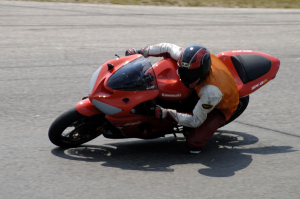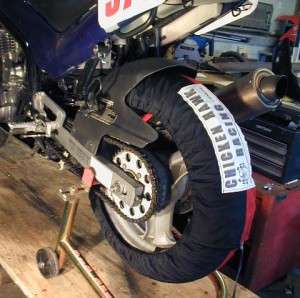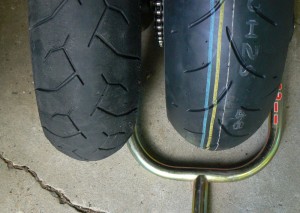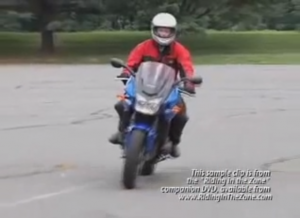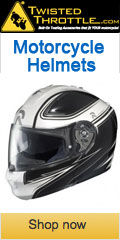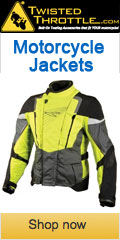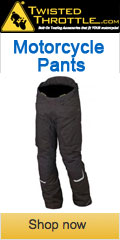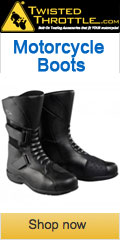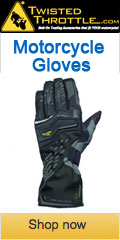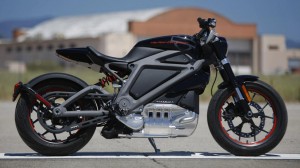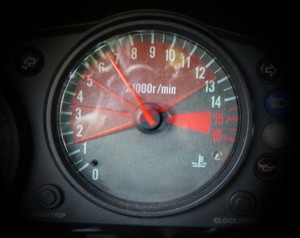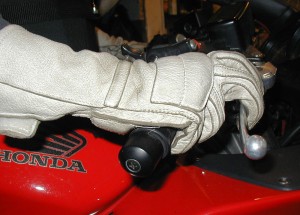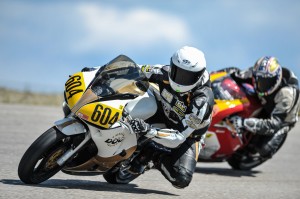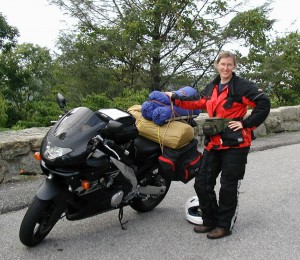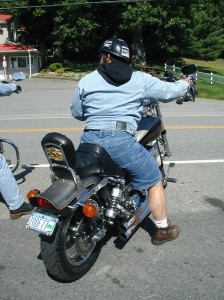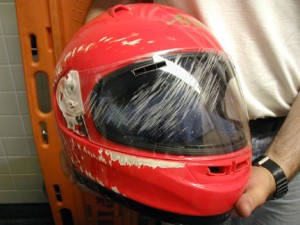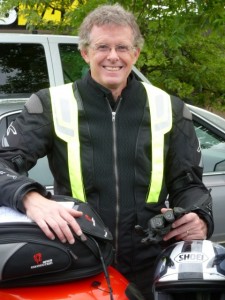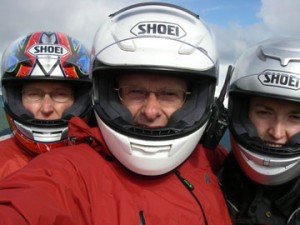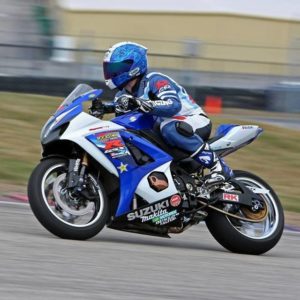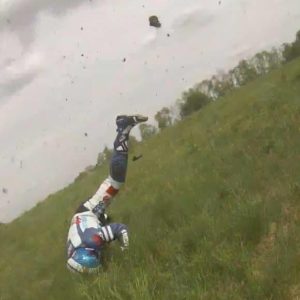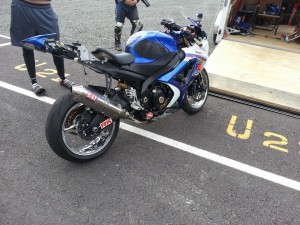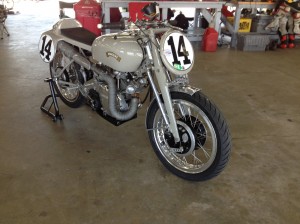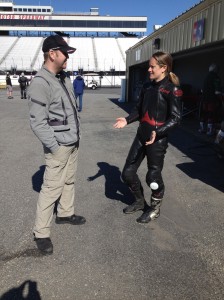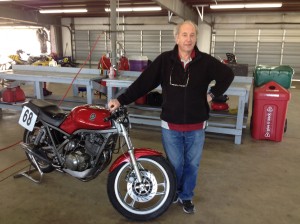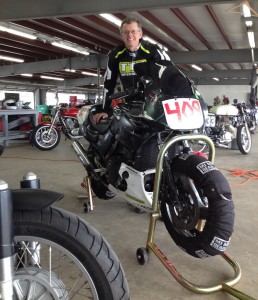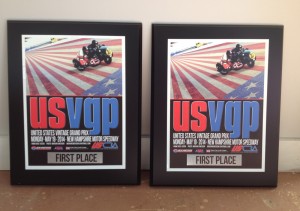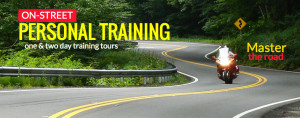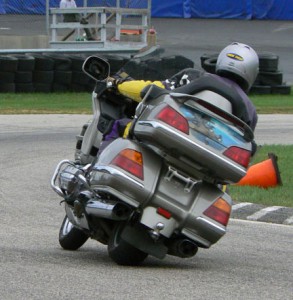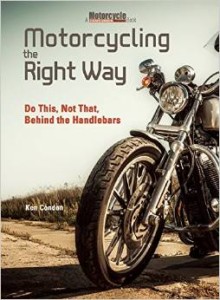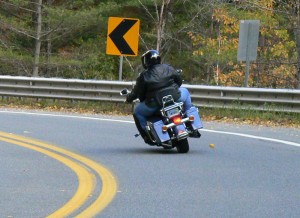
I just received another letter from a Motorcycle Consumer News reader, this time about a situation he encountered when riding on a twisty back road in Cali on his Street Glide. Here’s his story, followed by my response.
“Ken, your recent article (in Motorcycle Consumer News) on cornering traction was excellent. I just returned to Las Vegas after traveling up the coastal hwy to Oregon then back down to Las Vegas. While on that trip I had an incident involving cornering that left me very puzzled.
While heading to the coast from the 101 on hwy 128 north of San Francisco I was enjoying the curves of the coastal range. I ride a Harley Street Glide and ride fairly aggressively but not what I consider unsafe. As I was entering one turn (posted at 20mph) I leaned the bike into the turn and suddenly heard metal screeching on asphalt and almost simultaneously was aware that I had lost traction and was heading for the outside of the corner and a steep drop off.
Automatically I jammed my left foot down to the asphalt, but with my speed around 30-40mph sprained my ankle pretty badly. Much to my surprise I regained traction on the outside of the corner and was able to hold it there through the last 1/2 of the corner. My conundrum is that I’m not sure what happened! I felt comfortable with the speed I had entered the corner and I had entered from wide to just inside the center lane when the incident occurred. Normally, if I’m leaning the bike too much I’ll be aware of the foot board dragging. In this case there was no warning, just metal screeching and loss of traction simultaneously. Also, the road was great, with fairly new asphalt and no noticeable debris. Your thoughts would be greatly appreciated as this incident has made me extremely apprehensive whenever entering a corner with thoughts of this incident constantly in the back of my mind.”
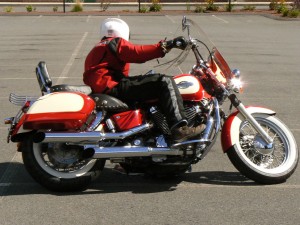
My Response
Without having seen or experienced the actual incident, I can only speculate on the cause based on knowledge of typical scenarios like yours. The fact is that ground clearance just doesn’t go from sufficient to nonexistent without a reason. It could be that you were leaning far enough that you were about to touch your floorboard when the mysterious factor occurred and your bike was suddenly grinding hard parts. This levered your tires off the ground and reduced traction.
Most times, when a bike suddenly goes from adequate ground clearance to zero ground clearance, it is a sign of traction loss caused by undetected surface contamination or debris, or abrupt throttle, brake or handlebar inputs, all of which are rider error. Sudden traction loss while the bike is leaned will cause the bike to drop quickly. This usually results in the rider tensing on the handlebars and chopping off the throttle, which exacerbates the problem.
If neither surface debris nor rider error existed, then you have to look at the possibility of a sudden and undetected change in surface camber that reduces ground clearance, or perhaps a depression in the road that would cause the suspension to compress.
Predicting that conditions can change quickly is a key survival strategy and applies to seemingly perfect pavement. New pavement can actually make ground clearance-robbing features such as undulations and dips difficult to see.
Knowing that your bike is a low slung machine means that you must be particularly sensitive and aware of these clearance hazards so that they don’t cause problems. One way to help manage limited ground clearance is to slow down.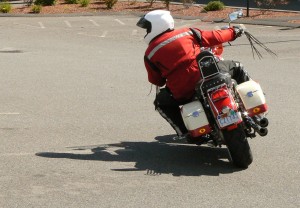
You can also learn to use body positioning to help increase ground clearance. By simply dropping your head and shoulder to the inside, you shift the combined center of gravity of bike and rider so that your machine doesn’t have to lean quite as much. Practice this in a parking lot and notice that your floorboards don’t drag as readily. My book has drills that can help.
If you are riding briskly on your Street Glide and continue to have clearance problems, perhaps you are exceeding the limits of the bike and need to consider trading in for a model that is more suited to your cornering exuberance.
Now that we’ve discussed the possible cause, let’s look at your reaction. The sudden loss of ground clearance, for whatever reason, triggered a panic response that not only had no significant effect on allowing your big Harley to recover traction, but also caused you to injure your ankle. This panic response is part human nature and is how most riders react when faced with a potentially life threatening situation.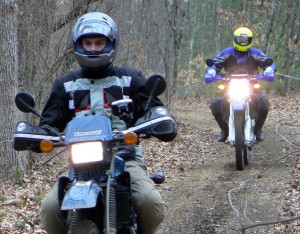
To minimize these survival instincts from causing more harm, you would need to re-train your mind and body to feel okay with minor traction loss. This is not easy to do when you ride a road-going cruiser, but is easily achieved with some off-road riding experience. Off-road riders routinely experience wide variations in traction and become accustomed to traction loss so that they do not overreact and make matters worse.
But, please understand that training yourself to react correctly is not a substitute for being aware of hazards and preventing them from causing an incident from happening in the first place.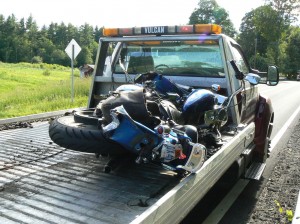
I hope this helps.
Ken
Do you have anything to add? Have you encountered a similar situation? How did it turn out? Please comment below.

Please Donate to Keep the Articles Coming
If you liked this article and the many other articles on this site, please toss a buck or five into the hat. It’s greatly appreciated!
- Click the PayPal “Pay Now” button.
- Then indicate quantity in $2.00 increments. – Example: put “2” in “QUANTITY” field to donate $4.00, “3” for a $6.00 donation, etc.
Why $2.00? Due to the PayPal fee structure, a $2.00 donation is significantly more beneficial compared to a $1.00 donation.
Thank You!
Check out these related posts:
- The “No Countersteering” Myth
- How to Preserve Traction by Managing Load
- How to Develop a Traction Sense
- #1 Reason for Motorcycle Crashes in Corners
